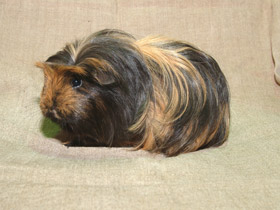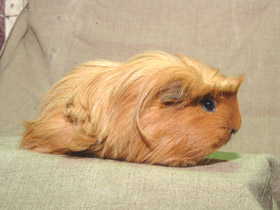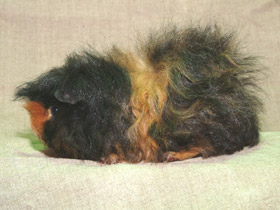Domestic guinea pig (Cavia porcellus)
Guinea pigs were first domesticated as early as 5000 B.C. by tribes in the Andes region of South America (present-day the southern part of Columbia, Ecuador, Peru, and Bolivia), who used guinea pigs for decoration purposes and as a source of meat. The Moche people of ancient Peru worshipped guinea pigs and depicted them in their art. Most people in the Andes region refer to the guinea pig by the name cuy, though there are many highly localized names for the animal. In European scientific publications, the “cuy” was first mentioned in 1554, in the Chronicle of Pery written by Pedro de Cieza de Leon. When Spanish explorers brought guinea pigs to Europe, these animals were given their name, “the guinea pig”. The origin of the world “guinea” is not clear but lovely squeaks and appetite of these cute creatures were certainly responsible for the name “pig”. From ca. 1200 A.D. to the Spanish conquest in 1532, selective breeding resulted in many varieties of domestic guinea pigs, which form the basis for some of the modern domestic breed. The body lengths of guinea pigs range from 25 to 35 cm, the males weigh between 1,000 and 1,500 grams, the weight of the female is 800-1,200 g. Guinea pigs lack tails; pedigreed animals have hanging down ears and wide, blunt snouts. There are many different breeds of the guinea pig, which vary widely in fur structure, length and coloration. The breeds are broadly divided into a number of groups: the smooth-coated (American- and English-crested, ridgeback), the long-coated (sheltie, texel, Peruvian, merino, etc.), the rough-coated (Abyssinian, rex, etc.), and the hairless (skinny, Baldwin).

















































